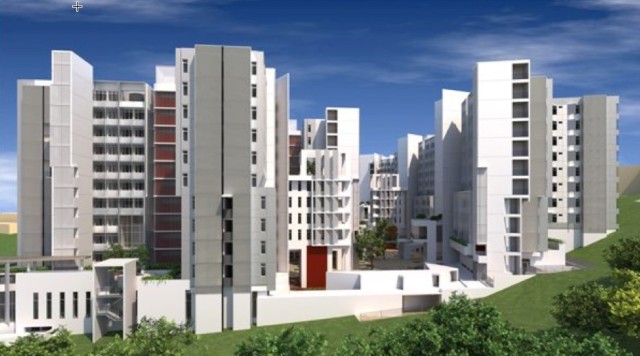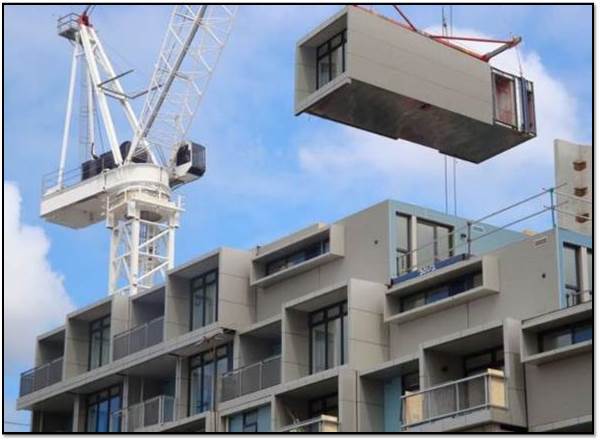The scale of what 3D printing may be used for continues to grow. The Singapore Centre for 3D Printing, based at the Nanyang Technological University (NTU), is currently initiating a project to construct high-rise public housing using concrete 3D printing.
Relying on prefabricated prefinished volumetric construction (PPVC), developed in partnership with Singapore’s Urban Redevelopment Authority, NTU already plans to construct three dormitories from modular rooms later this year. PPVC, as a concept, involves building individual units off-site, which are then assembled on-site in a Lego-like manner. In the case of the center’s 3D-printed public housing, concrete 3D printing is being thrown into the mix for the fabrication of structural elements for these individual units.
The 3D-printed houses will likely feature non-structural elements made by traditional means; internal fixtures (windows, plumbing, electrical elements, lighting, fans, etc.) can be installed between each subsequent layer of concrete during the printing extrusion process. The complete unit can then be shipped to the construction site for assembly.A major difference with the center’s process, however, is the actual material and methods used to fabricate the rooms.
Readers may recall concrete 3D printing from companies such as CyBe and Winsun, which produced 10 concrete homes that were 3D printed in 24 hours. Executive Director of the Singapore Center for 3D Printing, Chua Chee Kai, suggests an approach similar to that of Winsun’s in terms of modularity, but explains that the center will have to develop their own technology “from scratch” and says that he is working with an undisclosed company to test the idea.
The exact nature of Chua’s approach has yet to be revealed, but, as of now, the two most frequent methods for printing concrete involve large gantry-style systems or industrial robotic arms that pour quick-drying concrete, pumped to the feeder, layer by layer, with the quick-drying concrete being key to ensuring that each layer can support the next.
What is clear is that Chua’s approach will leverage the advantages of 3D printing and traditional PPVC buildings. According to NTU, PPVC is expected to “[save] up to 25 to 40 percent in manpower and 15 to 20 percent in construction time” when the dorms are built. Behrokh Khoshnevis at the University of Southern California (USC), a pioneer in 3D-printed construction, has said that concrete 3D printing has the potential to produce “a 2000 square foot house . . . in less than 24 hours,” while also minimizing waste through the printing of structures that are not fully dense.
Read more at ENGINEERING.com



